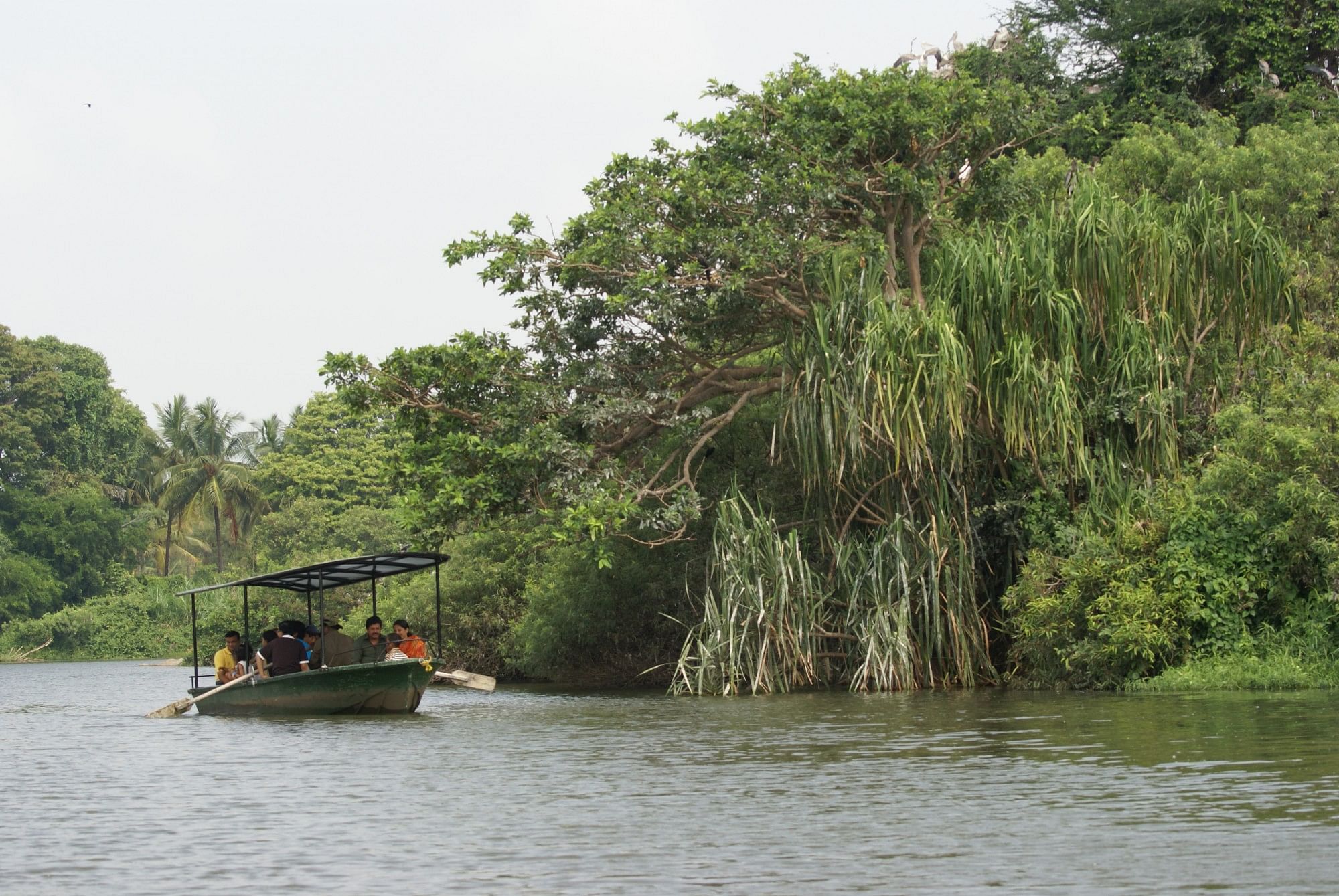
It’s on Cauvery, it’s in Karnataka, it’s 19 km from Mysuru, and its inhabitants are loud, diverse and assertive. But though there are hundreds of disputes every minute, when sunset falls, peace descends. The squabbling inhabitants of this haven are feathered residents of many sorts. It is, in our opinion, the most appealing riverine bird sanctuary in our land. It is also a great summer break: cool, outdoors, free of traffic jams and pollution, and gives one a chance to meet visitors from abroad. They’ve flown in, quite literally, from all over the world just to make sure that their next generation will be born in India! Pelicans, pintails, coots and a whole host of other feathered immigrants flock here every winter and then, just about now when it gets really warm, they migrate, spreading the Indian diaspora across the globe.
In the avian territory
It would add to the allure of the sanctuary if there was a display showing the many countries in which the birds have chosen to live, and how far they’ve flown to have their chicks hatch and fledge in Ranganathittu. Long-distance avian navigation is one of the mysteries of science: it’s probably based on wide-spectrum colour perception.
To make our feathered guests and visitors like us feel really at home, the forest department has landscaped the area accessing the river. Since birds are the closest living descendants of flying dinosaurs, the great reptiles of the ever-popular Jurassic Park series, the department might consider having a special exhibit showing the evolution of the avians from their reptilian ancestors. In fact, in many ways, Ranganathittu does replicate the ambience of those lush, early days of our world and that is one reason why we avoided the larger canopied cruise boats. We chose a smaller, open rowboat to take us off the beaten riverine path.
The Cauvery, in Ranganathittu, flows past a number of densely wooded islands, washes rocky outcrops, laps on its muddy banks overhung by trees, and waters the roots of towering forest giants rising above the monsoon flood-line. The combination of forest, water, rocks and mud makes this section of the river an extremely rich environment for fish and birds, particularly waterbirds. The wooded islands were alive with nesting avians, birds taking off, birds landing, birds feeding hungry down-covered chicks. A painted stork chased off another bird that had come too close to its nursery. A stone plover sat snugly on her nest on a rock washed by the river, a river tern had taken possession of the next bit of real estate: a far more attractive outcrop of rocks rising out of the river, with its own tiny patch of sand and pebbles. Her husband sat atop another rock, alert against predators, and raised his head aggressively when the shadow of a hunting brahminy kite touched it briefly. Clearly, one good tern deserves another! A night heron moved slowly, hunch-shouldered, at the river’s edge: it was so well camouflaged that it took us a long time to spot it even though our guide kept pointing it out.
Winged visitors
There seems to be sort of flyer’s hierarchy prevailing in Ranganathittu. On the highest levels of the shore-based trees, flying foxes, our large fruit-eating bats, hung upside-down, asleep like ripe black gourds. At the next level, though slightly to a side as if they did not really want to be associated with such lowly creatures as nocturnal, flying mammals, was the colony of fish eagles, large untidy apartments rather like the unkempt hairstyles of some rock stars.
Then came the massed tenements of the chatterati: the large egrets, the medium egrets, the cattle egrets, night herons, pond herons and cormorants. The storks… painted storks and open-billed storks... and the solemn pelicans, the glitterati of this community, were aloof, nesting on exclusive islands.
We were surprised to learn from an ornithologist that pelicans are migrants. In another bird sanctuary in Karnataka, they seem to be permanent residents. Perhaps those have chosen Indian citizenship because of the tender loving care of their village hosts.
Finally, there were the kingfishers, wagtails, river terns and stone plovers who, like artists, preferred their own studio apartments, in holes in trees, atop riverine rocks, and the choosiest of them all, the swallows, in their designer-built homes. There, at the far reaches of the river, in the overhang of huge boulders, fairly safe from predators, swallows had built their honey-comb colony of globular nests of mud cemented by their own spittle. Chicks cheeped for food, parents flew in and out like a swarm of bees. No penthouses could have been more elitist than these!
Birds, clearly, have the social ability to live in a vastly diverse and argumentatively urbane society in which, by mutual consent, harmony descends every night. And we call them bird-brained!